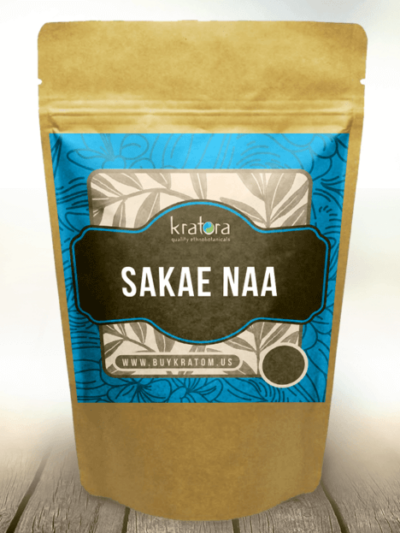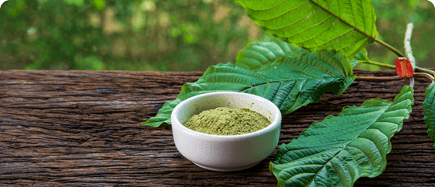Deep in the forests of Southeast Asia exist hundreds of distinctive plant species. For centuries, locals across Thailand, Vietnam, Cambodia, and other countries used these plants for a variety of medicinal and recreational applications.
Some of these plants, such as kratom, have gained recognition beyond their homelands. But other species continue to grow in relative secrecy, remaining unknown to the rest of the world.
Sakae Naa — or Combretum quadrangulare — is one such species. Although the plant has a history of use as a kratom alternative, Sakae Naa never gained equal traction among consumers.
However, despite its lack of mainstream popularity, the Combretum quadrangulare leaf has continued to fascinate researchers. Through continued study and analysis, today’s scientists are hoping to dissolve the mystique surrounding the plant while shedding light on its potential uses through research on Sakae Naa.
What is Combretum Quadrangulare Leaf (Sakae Naa)?
Sakae Naa is a small tree that’s native to the wetlands and jungles of Southeast Asia. It’s distinguished by its simple green leaves, small pale yellow flowers, and maroon colored seeds. At peak maturity, Sakae Naa can reach up to ten meters in height.
Sakae Naa is distinct in that all components of the plant — including its seeds, roots, and leaves — have pharmacological properties. The plant’s seeds and roots have a long history of use as anti-bacterial and antihelminthic (anti-parasite) agents. Research on Sakae Naa has also illuminated the plant’s pain-relieving, mood-elevating, and sedating properties.
To reap the benefits of Combretum quadrangulare leaf — whether recreationally or therapeutically — users typically chew the leaves. After the Thai government illegalized kratom in 1943, Sakae Naa gained popularity as a kratom alternative.
-
Body and Mind
Combretum Quadrangulare (Sakae Naa)
From $9.99 Shop Now This product has multiple variants. The options may be chosen on the product page
Broader Applications & Uses
Researchers throughout the last few decades have taken note of the plant’s therapeutic properties. Today, Sakae Naa is regarded as a promising — if under-researched — botanical.
Sakae Naa as a Anti-Parasitic & Antibacterial
Indigenous populations have traditionally used Combretum quadrangulare to expel parasites for hundreds of years. Nonetheless, researchers were unsure of the plant’s exact anti-parasitic efficacy until relatively recently.
In one study, researchers gauged the antihelminthic potency of Sakae Naa seeds by observing its interactions with roundworms in buffalo calves. They found that a single oral dose of Sakae Naa seeds reduced the number of Neoascaris vitulorum eggs in the calves’ feces to zero within 1-3 weeks. The authors also noted that, even at high doses, the seeds didn’t cause fatalities or toxicity.
Other studies have highlighted Sakae Naa’s effectiveness as an antibacterial agent. In a study published in 2006, the authors observed that extracts from the plant’s seeds successfully killed specific types of bacteria. Interestingly, the same Sakae Naa researchers also found that the plant’s seeds could be safely stored and used for years if kept away from air and moisture, demonstrating that Sakae Naa could also have a viable shelf life as a therapeutic agent.
Sakae Naa’s Liver Protective Properties
While Sakae Naa’s antibacterial and antihelminthic properties have been well established, some emerging research suggests that the Combretum quadrangulare leaf could also protect the liver.
In this research study on Sakae Naa, researchers observed that flavonoids and triterpenes found in Sakae Naa leaves demonstrated hepatoprotective — or “liver protective” — qualities. A more recent study attributed Sakae Naa’s hepatoprotective properties to three triterpenes in particular: 2α,6β-dihydroxybetulinic acid, 6β-hydroxyhovenic acid, and 6β-hydroxyarjunic acid.
These findings suggest that the leaves of Sakae Naa could be effective as a liver-protective ingredient. However, while there’s an existing market for liver-protective botanical blends and supplements, the exact viability of Sakae Naa as a marketed therapeutic agent is unknown.
Risks & Safety
Although Sakae Naa has many beneficial recreational and therapeutic properties, usage of the plant isn’t risk-free.
Common side effects associated with Combretum quadrangulare leaf use include dry mouth, constipation, and decreased appetite. However, at present, the long-term side effects of Sakae Naa are unknown.
Legality & Accessibility
Unlike many other comparable but higher-profile botanicals, Sakae Naa’s inconspicuous status has kept it legal in nearly all regions of the world. The plant can be freely purchased online in a variety of formats, including:
- Raw Sakae Naa: An unprocessed and unrefined blend of dried Sakae Naa leaves
- Sakae Naa Powder: A powdered preparation of Combretum quadrangulare leaves
- Sakae Naa Extracts: A highly concentrated form of Sakae Naa with heightened potency
Order Premium-Grade Sakae Naa Online at Kratora
Whether you’re interested in Sakae Naa, kratom powder, or another of our all-natural ethnobotanic kratom alternatives, Kratora is your online destination for high-quality botanicals from Southeast Asia and beyond.
At Kratora, we take great care to ensure that our products are always:
- Organic and all-natural
- Sourced from trustworthy and reliable growers
- Ultra-finely ground when applicable
- Packaged fresh to preserve quality and potency
Shop with us today to receive same-day shipping on orders submitted before 3 PM EST Monday through Friday and 1 PM EST on Saturdays (excluding holidays).
Please note that none of the products sold on our website are intended to diagnose, treat, cure, or prevent any disease or medical condition.
Want to learn more about kratom quality and value? Start here:
Why Buying Cheap Kratom Can Be Dangerous




